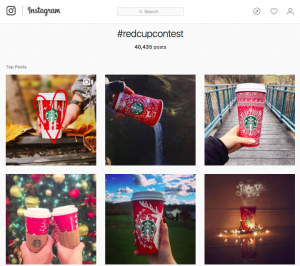Contributor Steve Dille explores the explosive growth of content marketing, drawing on lessons from email to help content weather a potentially rocky future.

Content marketing. Heard of it?
Whether B2C or B2B, content growth has obviously gone ballistic. Among everybody from mom-and-pop retailers to the biggest brands on the planet, content in all its many forms has been anointed king, whether it’s your blog, site content, viral video, e-book or any of the other multifold formats that fit under the umbrella of “content.”
With the range of digital touchpoints marketers have to feed just to keep competitive, we’ve all been drafted onto this particular party bus. Ergo, Marketing Land, or any of the countless other channels (mostly inferior to ours, I’m obligated to say) that have flooded us in an exponential bitstorm.
A Monster That Must Be Fed
How’d we get here? As my colleague John Pinson points out, a lot of it has to do with the rise of marketing automation platforms such as Marketo and Eloqua. Previously, “content” consisted of whitepapers or case studies, PR-crafted feature stories, direct mail/email campaigns, advertorials and other old-school forms. But content wasn’t regarded as a commodity in and of itself.
Marketing automation changed it all; it democratized sophisticated direct marketing technologies and techniques, so small companies could now reach out to prospects using targeting and analytics that were previously arrows in the quiver of only the biggest marketers, direct agencies and email service providers.
Just one recent survey (among many!) showed that 84% of “top performer” B2B marketing organizations intended to invest in marketing automation.
Of course, this has all coincided with the rise of the mobile web, driving the demand for both B2B and B2C content straight into the stratosphere.
But… there’s always a “but.”
Is Progression Driving Regression?
Sci-fi writer and critic Theodore Sturgeon originated an observation that got popularized as Sturgeon’s Law: Ninety percent of everything is crap.
What constitutes “quality” versus “crap” can be a sliding scale – but when it comes to digital content, it’s plain to see that the ever-increasing demand for “clickbait” has resulted in so much content that it can be hard for an audience to spy the gold amid the dross.
When there’s an overload of material, when delight in variety turns into jadedness, “consumption fatigue” can even diminish the attraction of the good stuff. Ever sat in front of the TV, scanning through hundreds of channels, and heard the words “there’s nothing to watch” slip from someone’s lips?
Beware The Coming “Content Shock”
Some shrewd pundits have advanced the idea that the unrestrained growth of content is ultimately unsustainable. In early 2014, in a widely-read blog post, social media expert Mark Schaefer coined the term “content shock” for the pratfall lying ahead for content marketing:
[T]his upward trend of consumption is not sustainable because every human has a physiological, inviolable limit to the amount of content they can consume.
The shakeout, in his mind, will be a matter of simple economics: to produce content that’s effective during this superabundance, marketers must spend more. This will favor those with deep pockets, raising the threshold of entry for smaller marketers and ultimately raising the cost of content marketing to the point where ROI diminishes, forcing marketers to turn to other approaches.
Survival Demands Balance
Let’s be honest — digital marketing has feasted on hype many times before and cycled through boom-and-busts around the newest tactic du jour. Caught in this rush, marketers act in haste, without integrating their shiny new toys into a holistic strategy, thus leaving themselves vulnerable when the shine wears off.
This is what we’re seeing right now, as content is generated solely for content’s sake, embraced as the kind of panacea that rarely pans out to meet inflated expectations. Any tool, however beguiling, is only one segment of the prospecting funnel. If “content shock” actually arrives and becomes resource-draining and even prohibitive for your company, having the agility and balance to adjust will be your best asset.
Applying Learned Lessons
This isn’t a jeremiad against content marketing. A rising tide lifts all boats, and in this case, plenty of firms (like my own, Message Systems) have benefitted from marketers’ turn to content delivery channels.
So, in that spirit, we’d like to offer up the hard-earned lessons of our long tenure in the email and messaging segment as being absolutely applicable in optimizing any content marketing initiative and helping thrive in the midst of mediocrity.
- Publish Or Perish. Brands and companies need to embrace their role as publishers, responsible for generating a steady flow of relevant, engaging material. It’s hard work, and you can’t cheap your way out of this if you’re interested in realizing content’s potential. In the world of email marketing, constant refreshing and refining programs is a given for success.
- Focus On Your Audience. If you’re not addressing their real interests, concerns and ambitions, your algorithmically calculated content isn’t any better than the most ephemeral spam, no matter how well it checks off the requisites of SEO or social media.
- Get Personal. “Content” doesn’t just align with inbound marketing, but should be customized to drive one-to-one engagement with your specific hand-raisers. There’s no better way to achieve that, short of a personal conversation, than via email and eCRM, which often seem to be regarded as afterthoughts by marketers focused on the inbound side.
- Always Be Better. Quality will always win out, even in a glut. The sharper the content — the more insightful and original — the more likely it’ll rise to the top, driving both social shares and SEO cred. That will do more than drive traffic and engagement – it’ll help build long-term equity for your firm as a true thought leader and industry stalwart.
- No Blog Is An Island – or whitepaper, or video, or any other content element, for that matter. Each has to work in sync with every other cog in the conversion funnel under a master strategy.
- Audit, Test, Replicate. Constantly monitor and analyze your campaigns; use A/B testing to determine what messages resonate best…and then replicate best practices, with appropriate variations, against other products or opportunities.
- Own Other Tools: Never assume one strategy is going to be sustainable forever, or suits every viable target segment. Content marketing may well endure, but the channels, technologies, and even what constitutes the “content” of customer engagement marketing will continually evolve.
I’ll finish on something of a personal note. I’ve been working in the tech marketing space long enough to remember the birth of real email marketing and how well that worked for B2B software companies in the early days of the commercial internet. It was novel at the time and a channel that wasn’t overrun yet.
We would send emails to prospects and get 10% response rates and higher. It was amazingly effective, and the consensus view was that email marketing was the dawn of a new era. And it was, to an extent.
But as we saw, everyone piled on once it became available to the masses. Today, our email boxes are flooded with offers and notices every morning — and while email studies vary, most cite response rates between 2 – 5%. I believe we’re seeing a similar trajectory with content marketing.
Will it drive engagement rates and lead-gen performance as it did when marketing automation capabilities first became widely available in the early to mid 2000s? No, that ship has sailed. But content marketing – just as with email marketing – will continue to be a vital implement in the marketer’s toolset.
Marketing Land – Internet Marketing News, Strategies & Tips
(355)






